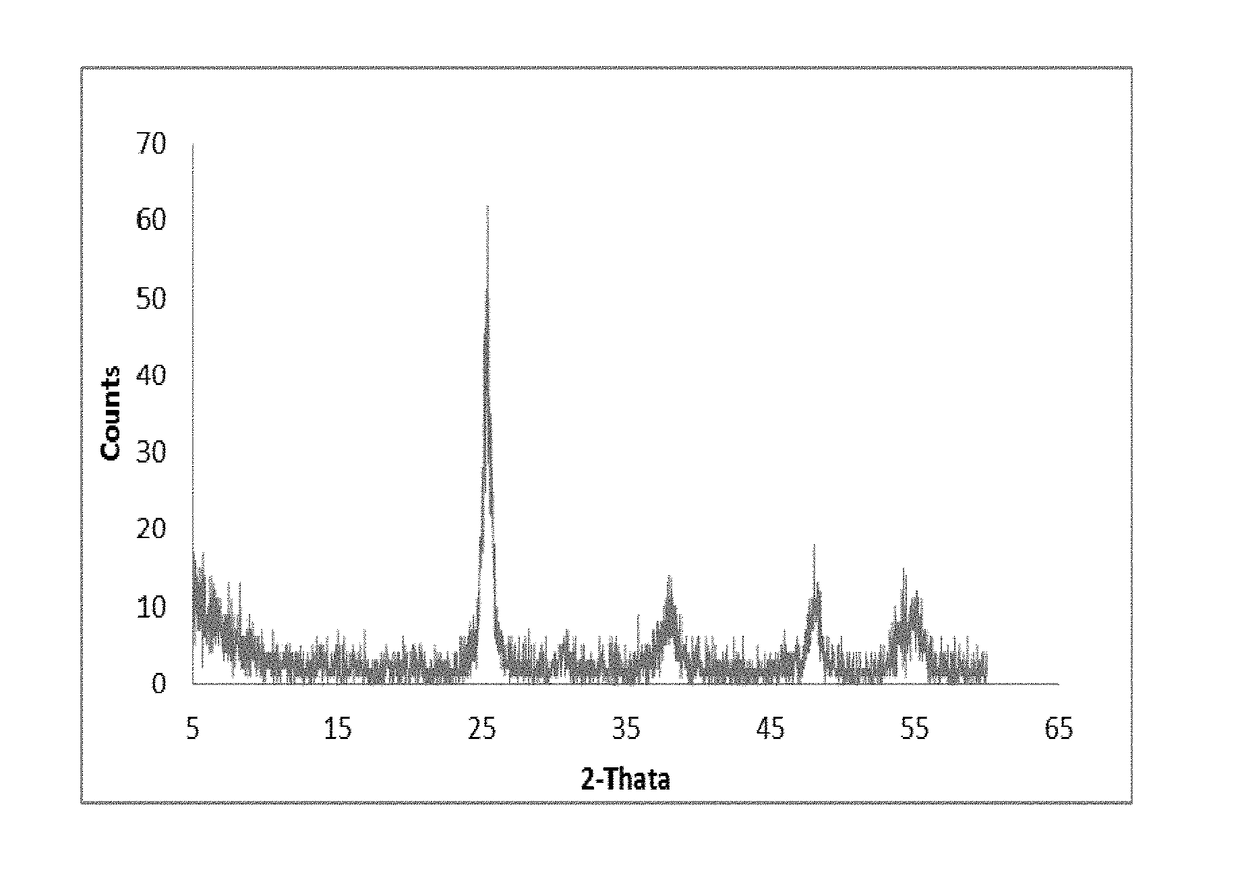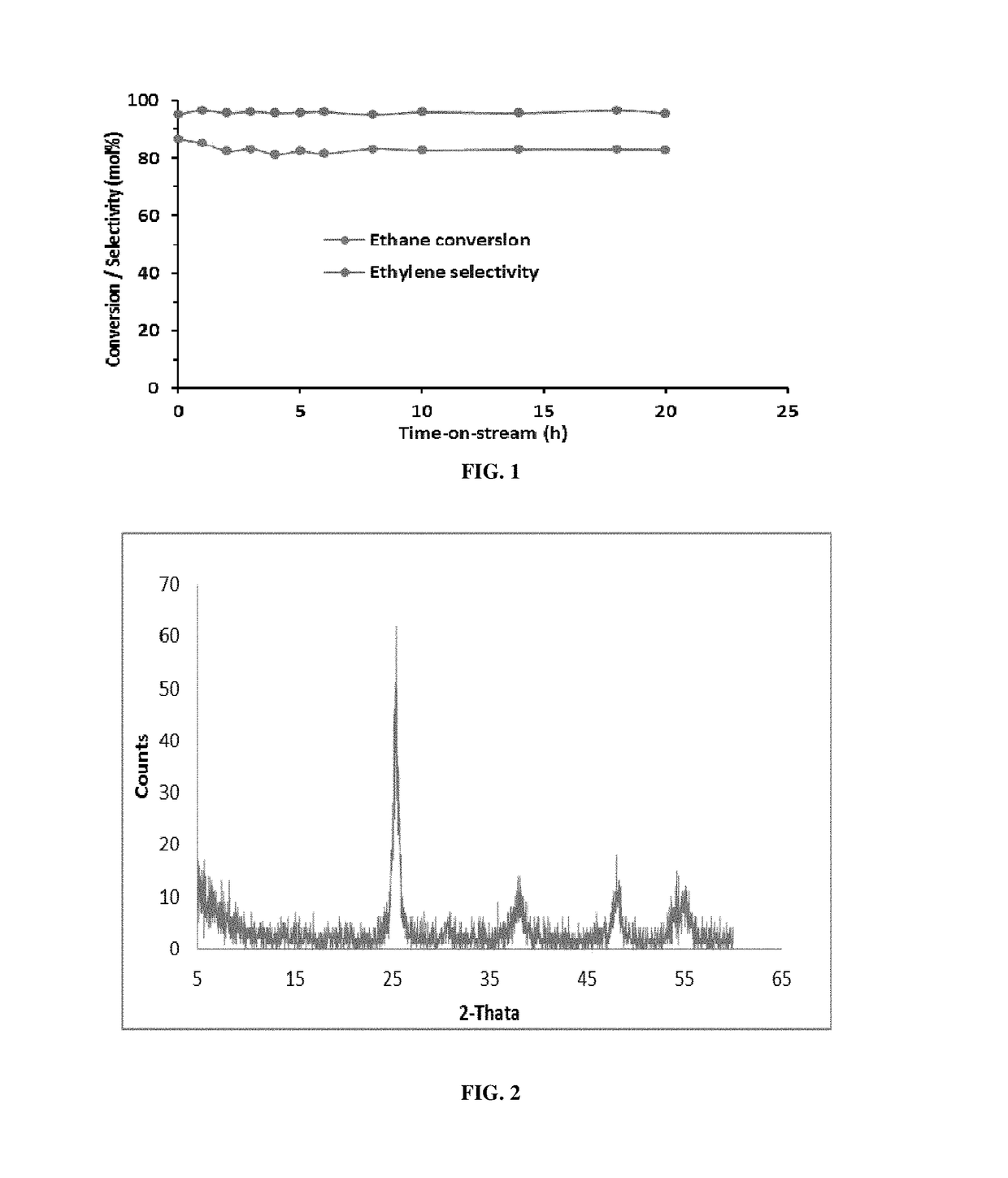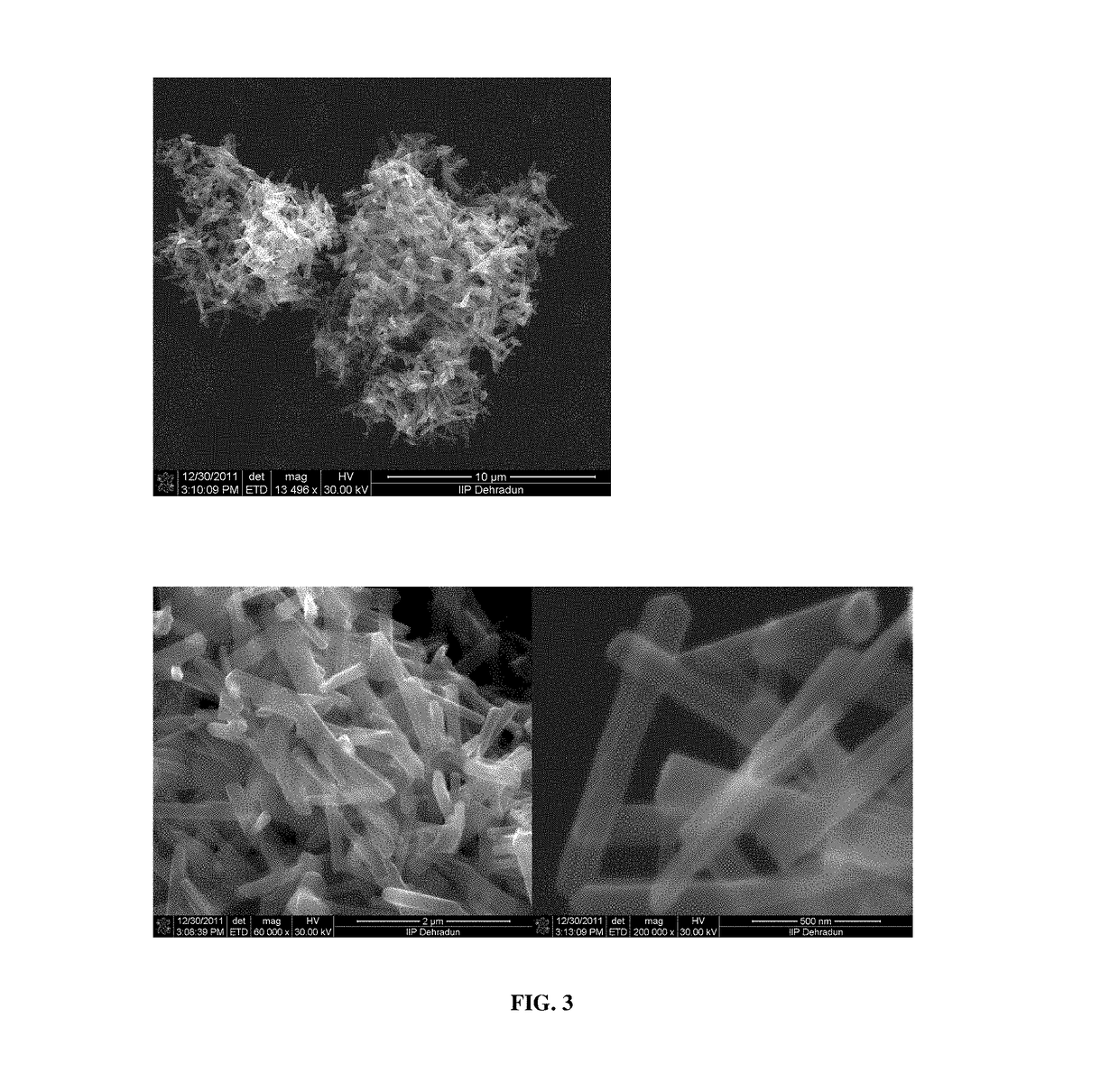Catalyst for selective dehydrogenation / oxidative dehydrogenation reactions and process for the preparation thereof
a selective dehydrogenation and catalyst technology, applied in the field of catalysts, can solve the problems of poor atom efficiency, high process cost, and successful commercialization of odh process
- Summary
- Abstract
- Description
- Claims
- Application Information
AI Technical Summary
Benefits of technology
Problems solved by technology
Method used
Image
Examples
example 2
[0077]This example describes the dehydrogenation of ethane by gas phase reaction in He using Mo—TiO2 nanocrystalline oxide as the catalyst. (Table-1)
[0078]The dehydrogenation of ethane to ethylene was carried out in a fixed-bed down flow quartz reactor at atmospheric pressure. Typically 200 mg of catalyst was placed in between two quartz wool plugged in the center of the 6 mm quartz reactor and dehydrogenation of ethane was carried out in a temperature range of 650-800° C. The gas hourly space velocity (GHSV) was varied between 10000 ml g−1 h−1 to 30000 ml g−1 h−1 with a molar ratio of C2H6:He of 1:9.
[0079]Process Conditions
Catalyst: 0.2 g
Mo: TiO2 wt % in the catalyst=5%
Pressure: 1 atmosphere
Total flow=33.3 ml / min (GHSV=10000)
Reaction time: 1 h
[0080]
TABLE 1EthaneEthyleneCatalystTemperatureConversionSelectivityYield(5% Mo—TiO2)(° C.)(mol %)(mol %)(%)Oxidative750918476dehydrogenation(With O2)dehydrogenation750869582(Without O2)
example 3
[0081]The example describes the effect of temperature on yield and selectivity ethylene. The product analysis presented in Table-2.
[0082]Process Conditions:
Catalyst: 0.2 g
Mo: TiO2 wt % in the catalyst=5%
Pressure: 1 atmosphere
Total flow=33.3 ml / min (GHSV=10000)
Reaction time: 1 h
[0083]
TABLE 2Effect of temperature on ethane conversion, ethylene yield and selectivityEthaneEthyleneTemperatureConversionSelectivity (molYield(° C.)(mol %)%)(%)Oxidative650658958dehydrogenation700828771(With O2)750918476800967874dehydrogenation6501010010(Without700569754O2)750869582800948984
example 4
[0084]The example describes the effect of time on stream on yield and selectivity of ethylene. The product analysis presented in Table 3
[0085]Process Conditions:
Catalyst: 0.2 g, Mo: TiO2 wt % in the catalyst=5%
Pressure: 1 atmosphere
Total flow=33.3 ml / min (GHSV=10000)
Reaction temperature: 750° C.
PUM
| Property | Measurement | Unit |
|---|---|---|
| particle size | aaaaa | aaaaa |
| temperature | aaaaa | aaaaa |
| temperature | aaaaa | aaaaa |
Abstract
Description
Claims
Application Information
 Login to View More
Login to View More - R&D
- Intellectual Property
- Life Sciences
- Materials
- Tech Scout
- Unparalleled Data Quality
- Higher Quality Content
- 60% Fewer Hallucinations
Browse by: Latest US Patents, China's latest patents, Technical Efficacy Thesaurus, Application Domain, Technology Topic, Popular Technical Reports.
© 2025 PatSnap. All rights reserved.Legal|Privacy policy|Modern Slavery Act Transparency Statement|Sitemap|About US| Contact US: help@patsnap.com



